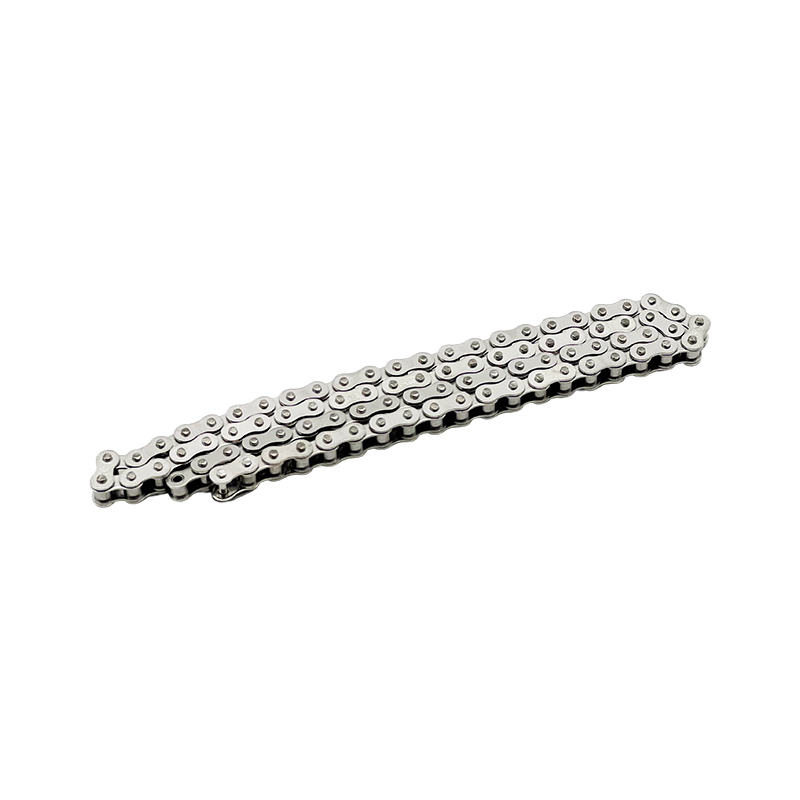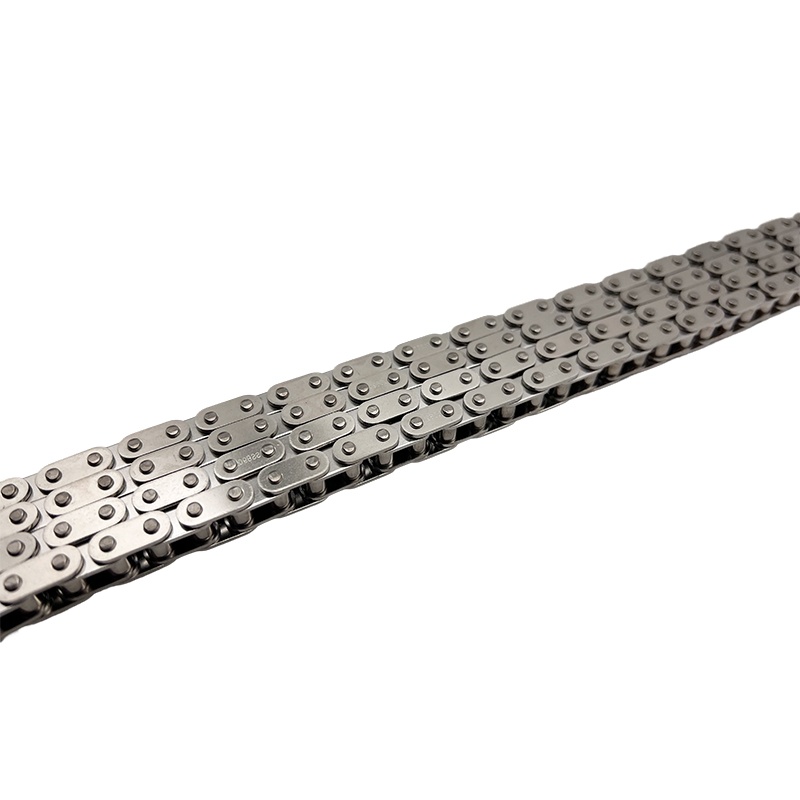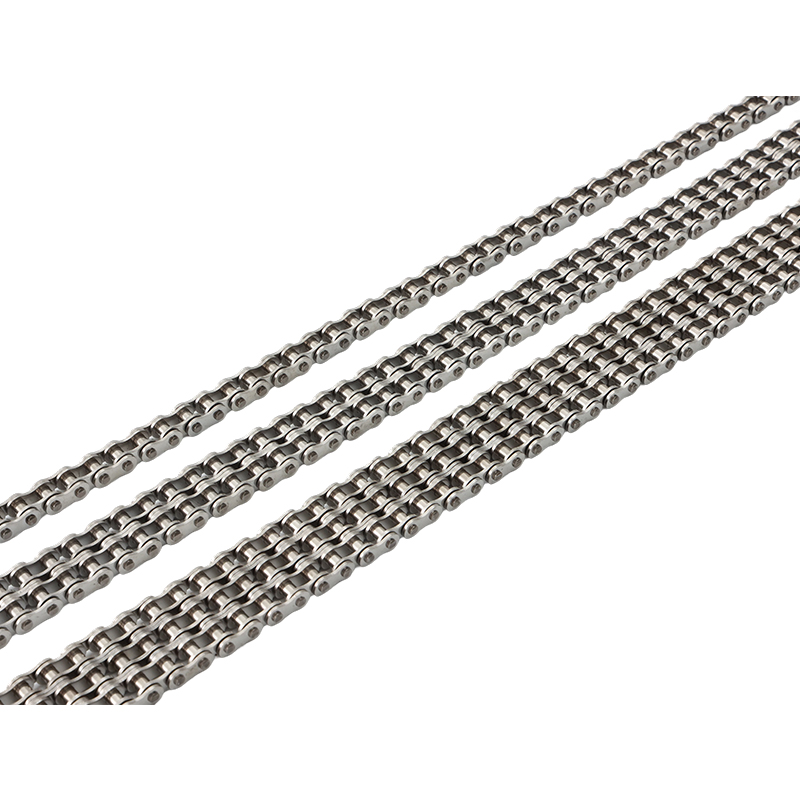How to determine the clearance between stainless steel 304 transmission chain and gear?
Release Time : 2025-10-28
The clearance between stainless steel 304 transmission chains and gears is a critical parameter for ensuring smooth and efficient transmission system operation. Determining this clearance requires comprehensive consideration of material properties, operating conditions, and design requirements to achieve a balance between tooth lubrication, thermal expansion compensation, and transmission precision control.
Stainless steel 304 transmission chains are widely used in food processing and chemical equipment for their excellent corrosion resistance and mechanical strength. When mating with gears, the design of tooth side clearance must prioritize lubrication requirements. Appropriate clearance ensures the formation of a lubricating oil film between the tooth surfaces, minimizing metal-to-metal contact, thereby reducing wear and extending service life. If the clearance is too small, the lubricating oil film may break, leading to dry friction on the tooth surfaces, accelerated wear, and even scuffing failure. If the clearance is too large, impact loads may cause pitting on the tooth surfaces or increased transmission noise.
Thermal expansion is another important factor in determining clearance. Stainless steel 304 has a high coefficient of linear expansion. Under high-temperature operating conditions, the dimensions of the transmission chain and gears may change due to thermal expansion. If the initial clearance is insufficient, thermal expansion may cause tooth flank compression, leading to seizure or abnormal noise. Excessive clearance can lead to thermal deformation and reduced transmission accuracy. Therefore, sufficient thermal expansion compensation must be provided during design based on the operating temperature range. The additional clearance requirement is typically determined by multiplying the material's thermal expansion coefficient by the temperature change.
Transmission accuracy requirements directly influence the clearance selection criteria. In precision transmission applications, such as CNC machine tools or robotic joints, excessive clearance can lead to position control errors, compromising machining accuracy and motion smoothness. These applications typically utilize a smaller clearance design and eliminate tooth side play with preload devices or backlash-eliminating structures (such as double-gear staggering or helical gear axial backlash adjustment). In heavy-load applications, such as lifting equipment or conveying machinery, a larger clearance can absorb manufacturing errors and shock loads, but backlash-eliminating devices are required to prevent transmission system vibration.
The manufacturing process has a decisive influence on achieving the desired clearance. The tooth profile machining accuracy, gear module, and tolerance grade of the stainless steel 304 transmission chain all limit the actual clearance adjustment range. High-precision machining (such as grinding and lapping) can achieve tighter clearance control, but this is costly. Standard machining requires adjusting center distances or selecting standard tolerances to meet basic requirements. Furthermore, assembly process accuracy (such as the parallelism and perpendicularity of the gear axis and transmission chain) also affects effective clearance, requiring calibration using precision measuring tools to ensure compliance with design requirements.
Wear and deformation during actual operation are dynamic factors in clearance design. After long-term use, tooth surface wear can cause clearance to gradually increase, requiring regular maintenance (such as adjusting center distances and replacing worn parts) to restore appropriate clearance. Furthermore, deformation of supporting structures (such as bearings and guides) can also alter meshing positions, leading to abnormal clearance. Therefore, a certain amount of adjustment margin should be allowed during design, and maintenance cycles should be established to monitor clearance changes.
Environmental adaptability is another dimension of clearance design. While stainless steel 304 transmission chains offer superior corrosion resistance compared to standard steel in humid or corrosive environments, the effects of electrochemical corrosion on clearance must be considered when using carbon steel gears. Corrosion products can fill tooth side clearance, causing transmission seizure or increased noise. In this case, stainless steel gears, surface coatings, or sealing can be used to minimize the effects of corrosion and maintain clearance stability.
The clearance between the stainless steel 304 transmission chain and gears requires comprehensive multi-dimensional design. From lubrication requirements and thermal expansion compensation to transmission accuracy control, manufacturing process limitations, and environmental compatibility, every aspect requires precise control. Proper clearance design not only improves transmission efficiency and reduces failure rates, but also extends equipment life, ensuring reliable operation in industrial applications.







